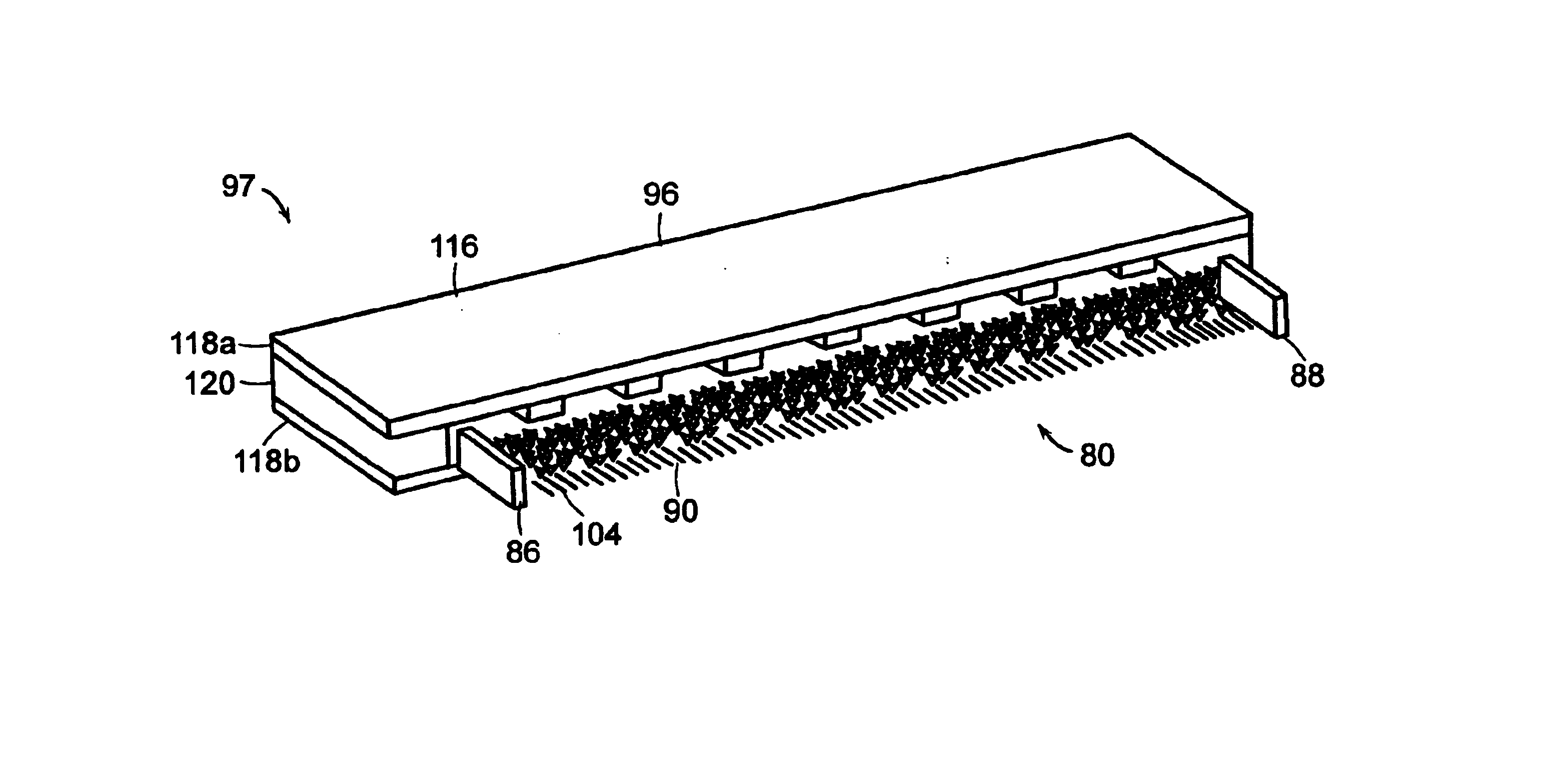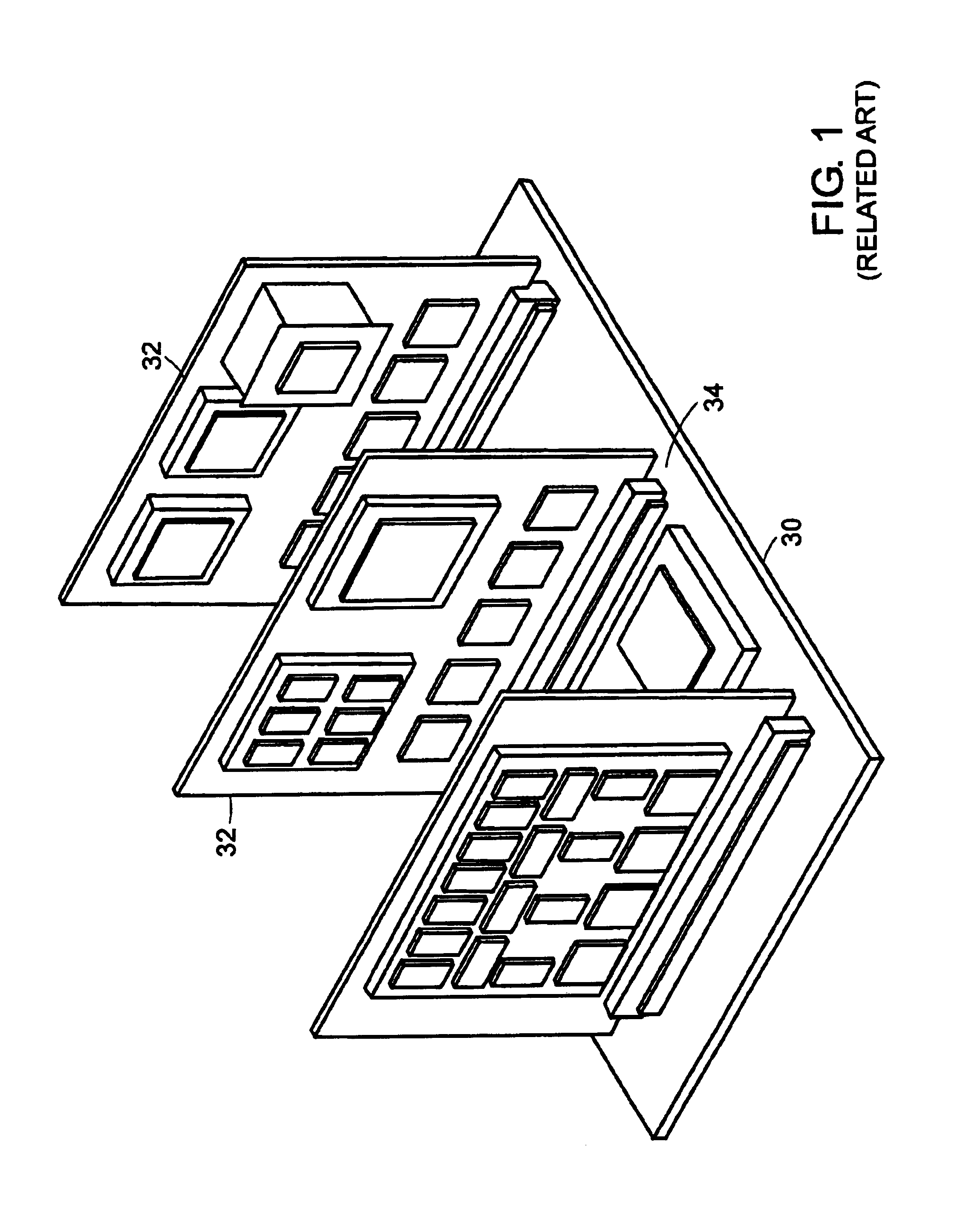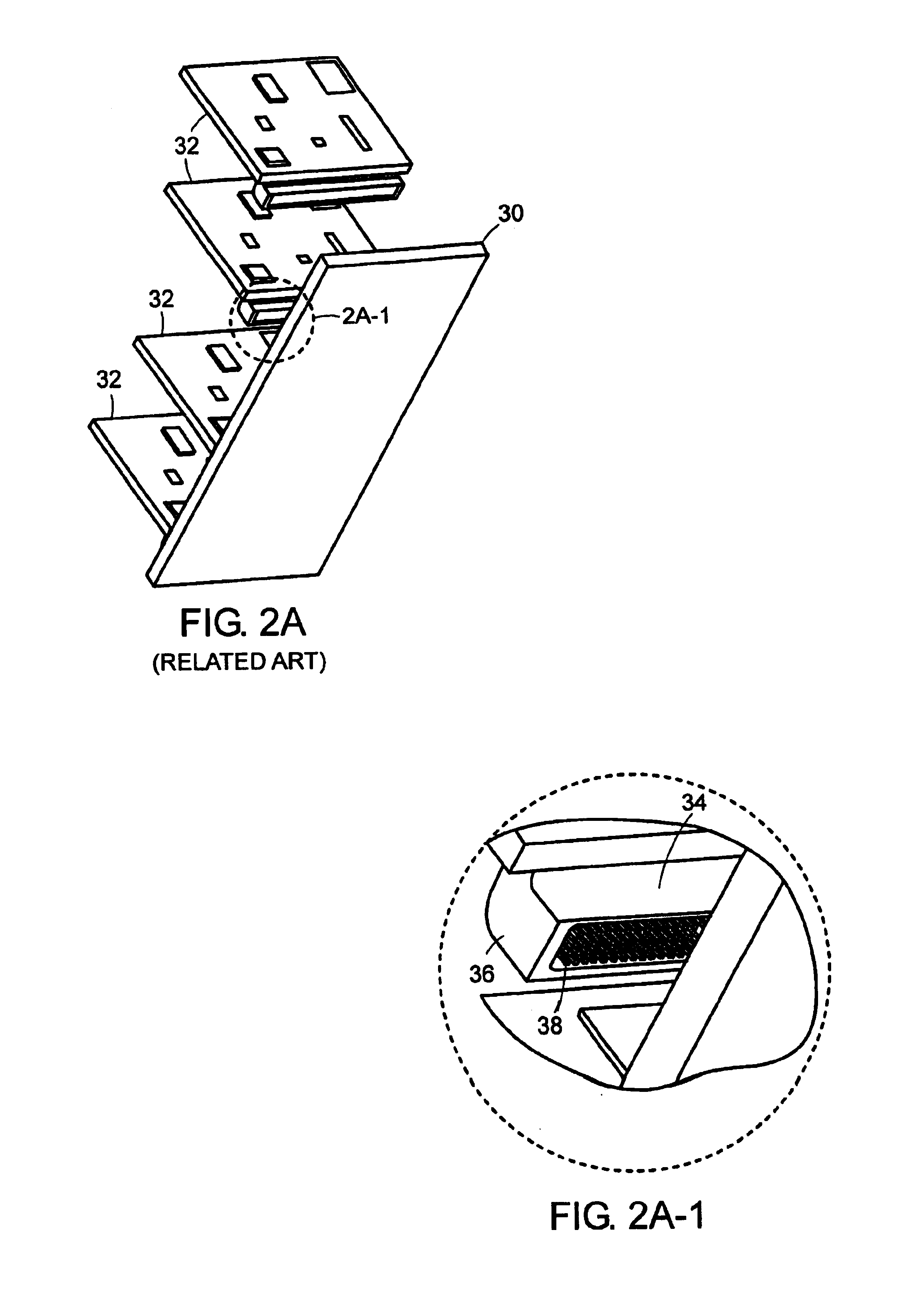System and methods for connecting electrical components
a technology of electrical components and systems, applied in the direction of connection contact material, coupling device connection, conductive pattern formation, etc., can solve the problems of increasing the size and power of electrical circuits and components, increasing the number of individual connectors, and increasing the number of electrical components
- Summary
- Abstract
- Description
- Claims
- Application Information
AI Technical Summary
Benefits of technology
Problems solved by technology
Method used
Image
Examples
Embodiment Construction
[0077]The present invention provides an electrical connector that may overcome the disadvantages of prior art connectors. The invention comprises an electrical connector capable of very high density and using only a relatively low normal force to engage a connector element with a mating connector element. It is to be understood that the invention is not limited in its application to the details of construction and the arrangement of components set forth in the following description or illustrated in the drawings. Other embodiments and manners of carrying out the invention are possible. Also, it is to be understood that the phraseology and terminology used herein is for the purpose of description and should not be regarded as limiting. The use of “including,”“comprising,” or “having” and variations thereof is meant to encompass the items listed thereafter and equivalents thereof as well as additional items. In addition, it is to be appreciated that the term “connector” as used herein...
PUM
 Login to View More
Login to View More Abstract
Description
Claims
Application Information
 Login to View More
Login to View More - R&D
- Intellectual Property
- Life Sciences
- Materials
- Tech Scout
- Unparalleled Data Quality
- Higher Quality Content
- 60% Fewer Hallucinations
Browse by: Latest US Patents, China's latest patents, Technical Efficacy Thesaurus, Application Domain, Technology Topic, Popular Technical Reports.
© 2025 PatSnap. All rights reserved.Legal|Privacy policy|Modern Slavery Act Transparency Statement|Sitemap|About US| Contact US: help@patsnap.com



